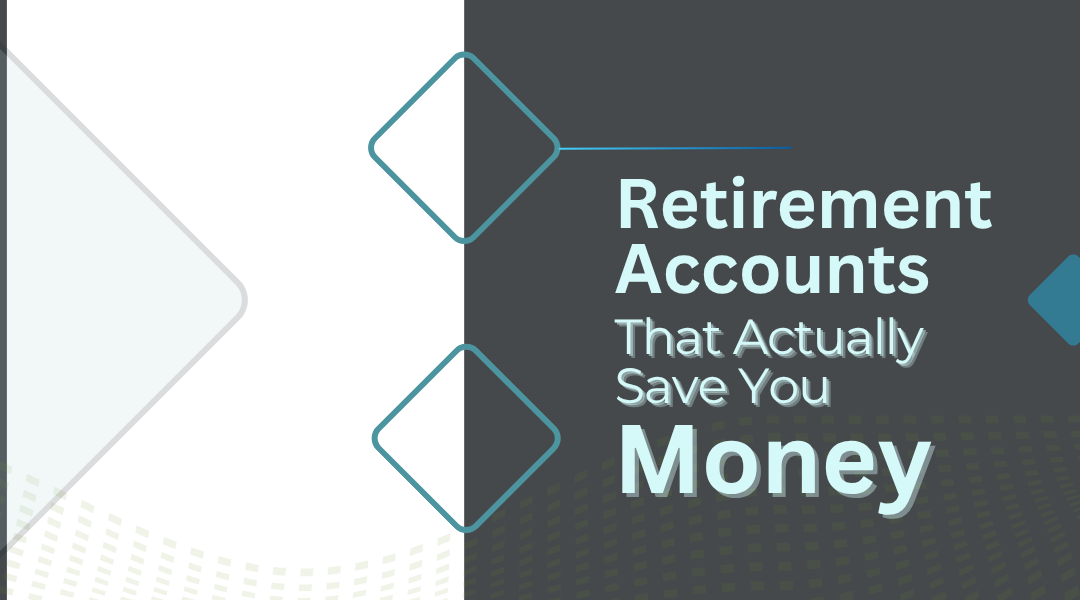Let’s cut through the financial jargon—retirement planning shouldn’t feel like doing taxes in a foreign language. The real trick? Using accounts that either:
- Shrink your tax bill right now
- Let your money grow tax-free forever
- Somehow do both (yes, these exist)
Here’s the no-BS breakdown of how to use these accounts—with real examples of what works (and what backfires).
The IRA Showdown: Traditional vs. Roth
Traditional IRA: The “I’ll deal with taxes later” move
- How it works: Every dollar you contribute deducts from this year’s taxable income.
- Reality check: You’ll pay ordinary income tax on withdrawals later.
- Who wins? A 45-year-old doctor making $300K who expects to retire on $80K/year.
Roth IRA: The “pay taxes now, laugh later” strategy
- How it works: You contribute after-tax money, but withdrawals (even gains) are 100% tax-free.
- Secret perk: No forced withdrawals at age 73. Leave it growing for your kids if you want.
- Who wins? A 25-year-old software engineer whose $80K salary will likely be $200K+ later.
Pro Move: The “Backdoor Roth” (How high earners cheat the system)
- Contribute to a Traditional IRA (no income limits)
- Immediately convert to Roth IRA
- Pay $0 in taxes if done right
Warning: Mess this up and you could owe thousands. Talk to a CPA first.
401(k)s: Where “Free Money” Meets “Tax Hack”
The Obvious Win: Employer matching
- Example: Your company matches 50% of contributions up to 6% of your salary.
- Translation: On a $100K salary, contribute $6K → get $3K free. Instant 50% return.
The Hidden Play: Mega Backdoor Roth (if your plan allows)
- After maxing your $23K 401(k), contribute after-tax dollars (up to $69K total)
- Convert those after-tax dollars to Roth
- Boom—$40K+ extra in tax-free growth per year
The Trap: High-fee funds eating your returns
- What to do: Find your plan’s “index fund” options (look for “S&P 500” or “total market” with fees under 0.10%).
HSAs: The Ultimate Stealth Retirement Account
Why it’s better than your 401(k):
- Triple tax advantage (no other account does this)
- No RMDs
- Can invest the balance like a brokerage
How to weaponize it:
- Max contributions ($4,150 individual/$8,300 family in 2024)
- Pay medical bills out of pocket (save receipts!)
- Let the account grow for 20+ years
- Reimburse yourself tax-free anytime (even in retirement)
Killer stat: $8,300 invested annually at 7% for 30 years = $800K+ tax-free for healthcare (or anything after 65).
Brokerage Accounts: The “I Maxed Everything Else” Move
When to use:
- You’ve already maxed 401(k), IRA, HSA
- Need money before 59.5 (early retirement, house down payment)
Tax Tricks:
- Hold investments >1 year → qualify for 15% capital gains vs. 24%+ ordinary income rates
- Use “tax-loss harvesting” (sell losers to offset winners’ taxes)
- Stick to ETFs over mutual funds (fewer taxable events)
Example: Selling $20K of Tesla stock after 13 months? You pay just $3K in taxes (15%) instead of $4,800 (24%).
Specialty Accounts You Might Be Missing
For teachers/nonprofits: 403(b)s (just like 401(k)s but often with worse fund options—fight for the index funds)
For government workers: 457 plans (the holy grail for early retirees—no penalty for withdrawals when you leave your job)
For freelancers: SEP IRA (contribute up to 25% of income, max $69K)
The Real-World Playbook
- First, get the free money: Max your 401(k) match.
- Then, lock in tax-free growth: Roth IRA (or backdoor Roth if needed).
- Next, nuclear option: Max HSA and don’t touch it.
- Finally, taxable brokerage (but only after steps 1-3).
Why this works: A 30-year-old following this could have:
- $2M in 401(k)/IRA
- $500K in HSA
- $1M in brokerage
All while paying thousands less in taxes every year.
The catch: You actually have to start. Today. Because compound growth doesn’t care about your excuses.
Disclaimer: Tax laws change. Your situation is unique. Consult a fiduciary financial advisor (not just Reddit).
